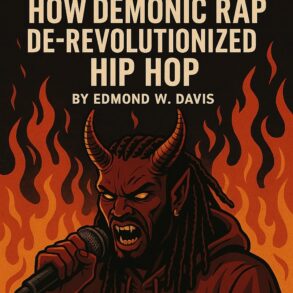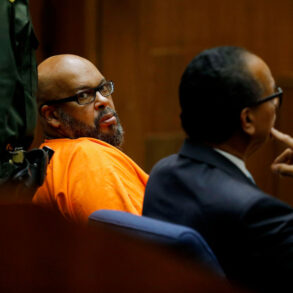
On Aug. 8, 2023, rapper Tory Lanez was sentenced to 10 years in prison for shooting Megan Thee Stallion. Evidence included an apology from Lanez sent to Megan, gunshot residue and DNA on the gun. The conclusion was undeniably beyond the threshold of reasonable doubt. Yet, the reactions in comment sections predominantly favored Lanez.
I was left disappointed, but not surprised, for several reasons. First, there is a tendency for individuals to align with their gender when lacking comprehensive information. Second, the coverage of the issue by media outlets such as XXL had been subpar. Lastly, the pervasive culture of toxic masculinity within the rap industry caused immediate doubt in women, even if there was conclusive evidence supporting her.
I am sure you are aware of the dangers of media bias and ignorance; however, hip-hop’s role in subliminally broadcasting negative female stereotypes through toxic masculinity is not spoken about enough.
Despite my deep-seated love for hip-hop, a genre I find unparalleled in its creativity and vital in expressing the nature of the Black experience, I can’t pretend hypermasculinization in the art and the public perception of Lanez’s case is a microcosm of this issue.
It is important to note that hip-hop is deeply rooted in the Black struggle. Black men frequently resort to hypermasculinity as a way to cope with the difficult circumstances imposed upon them. This behavior is reflected in the male-dominated industry.
Hypermasculinity is characterized by three main attitudes: first, the belief that men should not exhibit emotions typically associated with femininity, such as compassion or empathy, and because of this value system, women are viewed as oppositional forces; second, valuing external achievements like sexual conquests or physical prowess as markers of masculinity; and finally, viewing homosexuality and traits associated with it as contrary to masculine norms, leading to homophobia.
The traits commonly associated with masculine hip-hop culture are also prominently displayed in Tory Lanez as a person and the case itself — further demonstrating how he is the embodiment of toxic masculinity in hip-hop culture.
Throughout the case, Megan was criticized by several prominent male artists, including 21 Savage, Drake and 50 Cent. This collective bashing demonstrates not only how male-dominated the field is but also how these stars view women as oppositional.
Tory Lanez’s case notably stands out due to his 5-foot-3-inch height. He seems to compensate for his smaller stature by over-emphasizing his sexual exploits. His music operates in a unique position in terms of genre because it is a mix of hip-hop and R&B. This fusion means he often talks about having sex, but not in the romantic and empathetic tone of R&B.
Finally, Tory Lanez completes the hypermasculinity trifecta when he comes rushing to the defense of rapper Boosie and DaBaby following their homophobic incidents.
Boosie made highly derogatory remarks towards Lil Nas X, calling him “the most disrespectful mother—–r” and using homophobic slurs.
DaBaby, on the other hand, made offensive remarks regarding HIV/AIDS and homophobic comments during his performance at the Rolling Loud hip-hop festival.
It’s not surprising that these three artists, who have each faced backlash for their controversial comments and actions, are banding together. Collectively, this triumvirate of toxicity has become the face of toxic masculinity and bigotry in the industry. Luckily their stardom has dwindled because of their closed toxic views of women.
Their content’s repetitiveness and lack of evolution, often characterized by derogatory comments about women, have made their music and projects stale.
Even among audiences with views similar to them, there is a threshold for how frequently and intensely you bash women before it becomes unpalatable, even if you are a bigot. Because of this, many successful artists include a complex and accurate view of women. Even artists associated with misogyny, like Kanye West and Playboi Carti, sometimes delve into nuanced and positive perspectives on women. For instance, the songs “Roses” and “Violet Crimes” are songs by West that explore relationships with women from his family.
Despite those so-called stars’ declining popularity, hypermasculinity remains a crucial component of hip-hop culture. It is engraved into the fabric of the genre.
However, a song is an interaction between you and the artist. This means that you control what you listen to and how you choose to interpret what you listen to. This condition allows you to have two points of agency over the music you listen to. First, you can choose not to listen to hypermasculine songs. Second, listen and recognize that these perceptions of women are inaccurate in the songs, and don’t let their thoughts control your feelings.
In celebration of Women’s History Month, let us highlight the contributions of female rappers or artists as alternatives to listen to instead of these masculinized songs. My personal favorites are Missy Elliott, Lauryn Hill, Little Simz, Rapsody, Tierra Whack and Noname.
This post was originally published on this site be sure to check out more of their content.







